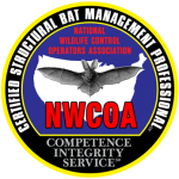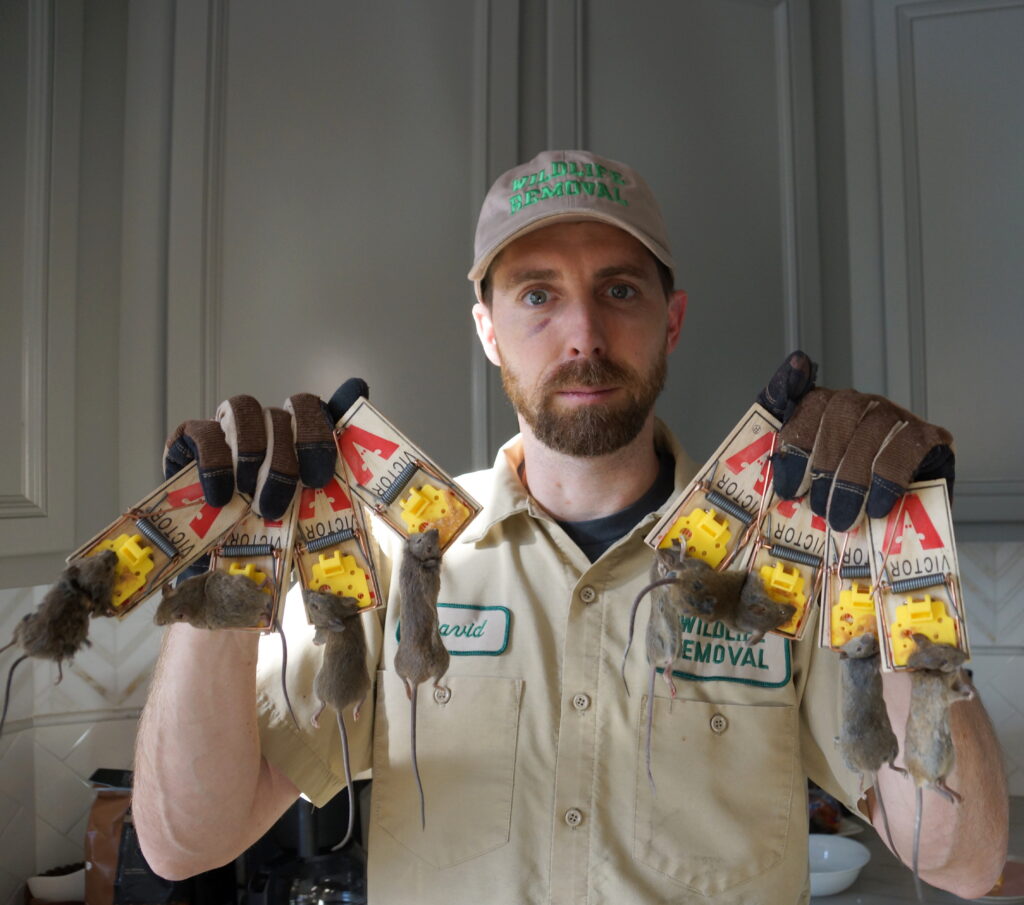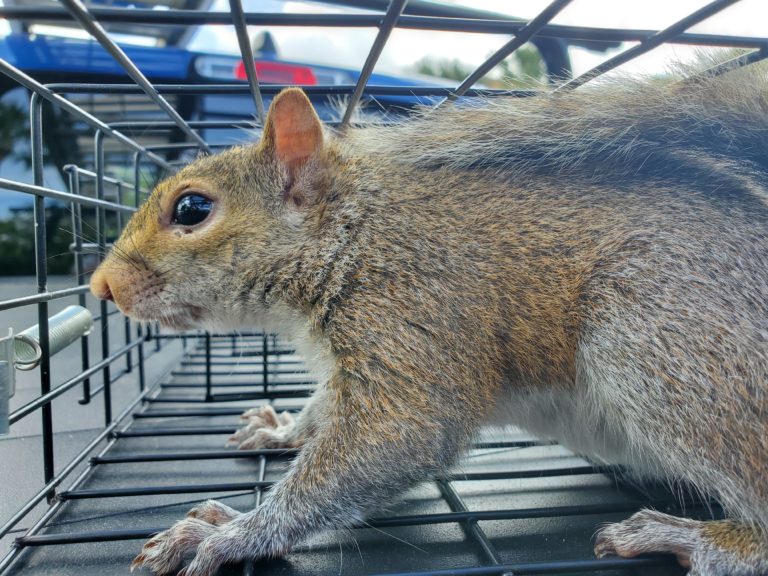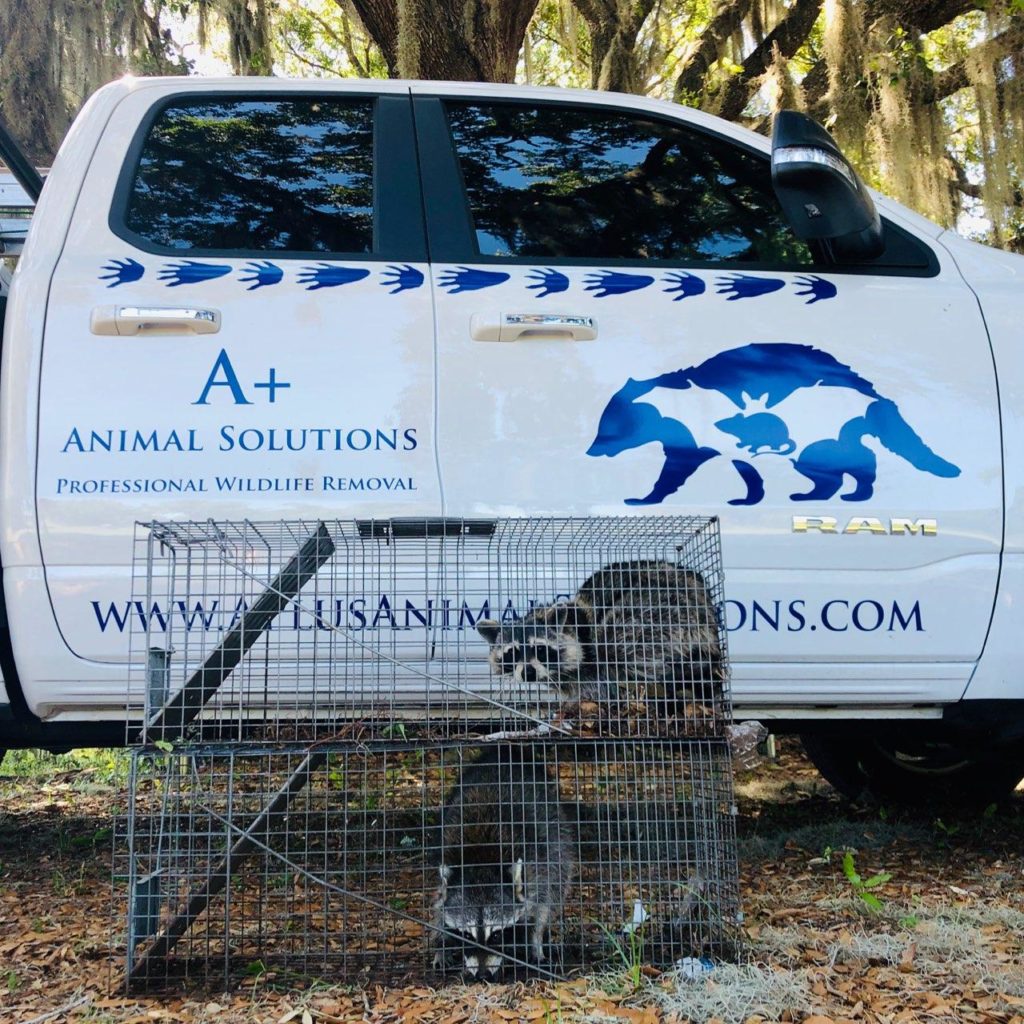GET RID OF RODENTS ONCE AND FOR ALL
Rodent Control & Removal | Fast & Accurate Wildlife Control
Humane Wildlife Removal and exterminator in Florida
Rodents are one of the most populous mammal classes on the planet with over 2,230 identified species. However, only three species are considered pests in the United States. They are roof rats (Rattus rattus), Norway rats (Rattus norvegicus), and house mouse (Mus musculus). These three rodents are identified as major pests because they thrive in human settlements that provide them with food, water, and shelter.
Rats and mice are highly destructive, causing immense structural damage. Also, they are carriers of several diseases. These reasons make them unpalatable and wildly detested. However, due to their high fecundity, they are difficult to deal with. Unsurprisingly, rodent control is a major issue faced by many households in the United States and around the world.
In this article, we’ll delve into the biology of rodents so we can understand their evolutionary drive and the risk they pose. Finally, we’ll examine how to control and prevent rodent infestations.








Basic Rodent Biology and Risk
Rats and mice are opportunistic food scavengers and will eat almost anything. Although rats prefer larger food items like meat, fish, and cheese, mice prefer grains, vegetables, seeds, and fruits. Rats and mice are also prolific breeders. A female rat can reproduce every three weeks, giving birth to about six to 10 pups every single time. Mice, on the other hand, reproduce every four to six weeks, mothering an average of 6 pups at a go. This explains why their colony grows exponentially. Just a few rats living in your property can quickly explode in terms of numbers, in a short period. Rats and mice have a short life span of about one year. Some of the potential risks associated with rodents include:
1) Structural Damage
Rodents have an evolutionary drive to chew through objects to keep their incisors in check. The incisors are their front-most teeth and are known to grow throughout their lives. Therefore, having rodents on your property can lead to immense damage. They will chew through paper, wood, drywall, insulation, wiring, pipelines – pretty much anything they can get their teeth on. In the United States alone, rats and mice cause yearly damages in the excess of $20 billion.
2) Infectious Diseases
Rodents can contaminate food. Most unsettling, they are reservoirs and vectors for a wide array of infectious diseases that they spread through their droppings, urine, hair, and saliv

Rodent Control Process
There are three basic steps in opossum removal. They are inspection, treatment and decontamination, and prevention.
1) Block Entry Areas


- Overlapping and tiled roofs.
- Broken sewers connected to the main sanitary sewer and toilets.
- Space between roof jacks and vent pipes.
- Crawl holes with a badly fit lid.
Due to the experience needed and complexity involved in effectively identifying and sealing potential entry points, it is best to involve the service of a pest management professional.
2) Poison-Free Rodent Control
After sealing the entry points, rodent control is the next step. The most important thing to note is that using poison is an ineffective and inhumane way to kill rats and mice. Poison seldom kills all of them, especially if entry points have not been sealed. Moreover, poison leaves dead rats rotting away in your attic, walls, and other hidden locations, emitting foul smells. Trying to locate dead rodents can then be problematic.
Similarly, glue traps are highly inhumane, inflicting great torture to rodents before they die. The permanent industrial adhesive on glue traps immobilizes any rodent unfortunate to step on it. After struggling to get off it for hours or even days, they eventually die of starvation, exposure, or suffocation.
The two humane ways to eliminate rodents include:
- Snap or Electric Trap:
These traps humanely kill the rodent, usually in a relatively short amount of time. Furthermore, because these devices retain the dead animal, it is very easy to locate it and dispose of properly.
- One-Way Exclusion Funnels:
This method provides a way to successfully exclude rodents from your house without killing them. It works by sealing all entry points into your property except one. This is where the exclusion funnel is installed. Once a rodent leaves through that hole, it’s impossible to get back in. One major drawback is that you might have to wait a long time for all the rodents to leave. However, the greatest disadvantage is if a female leaves her pups and is unable to get back in. The
pups are likely to die and you have to deal with the foul smell that will ensue.
Therefore, snap or electric traps are the most effective in dealing with a rodent infestation. Setting traps is an art that requires expertise. This is why it is advised to seek professional help when dealing with rodent removal.
Decontamination and Repair
After all the rodents have been removed, the infected spaces must be decontaminated. This is because their droppings, urine, hair, and nesting materials are breeding grounds for bacteria that can eventually cause diseases like Salmonella or Leptospirosis. Moreover, you want to prevent a situation where bugs and cockroaches will be attracted to these remnants. Also, all structural damages should be repaired. This includes chewed woods, electrical wires, pipelines, insulation, and ducts.
Conclusion
The best way to ensure effective rodent control is by discouraging them from your property in the first place. This involves keeping good hygiene by eliminating food and water supplies and sealing all potential entry holes. In a case where all this fails, snap and electric traps are great ways to eliminate rodents if done correctly.


Damage that Rats do to your home or building
Rats are among the most dangerous pests to have in your home: they can cause immense structural damage and they carry deadly diseases everywhere they go. To add insult to injury, rats multiply at a breakneck rate, bearing as many as 1000 offspring in a year. For this reason, dealing with a rat problem as soon as it manifests is crucial. Signs of a rat infestation, however, are not always obvious because rats only need a hole around half an inch (1.27 cm) wide to access your home. Because of this, letting a professional, such as our wildlife control specialists at A+ Animal Solutions inspect your house for rat damage on a regular basis should become a regular part of your home-owning duties: an infestation caught and treated early can prevent both structural damage and disease from reaching you and your loved ones.
To begin, rats chew a lot: their teeth grow at a rate of 4.5-5.5 inches (11-14 cm) per year, meaning that they need to chew things constantly to keep their teeth at bay. In a home, this can manifest as drywall, insulation, and wiring damage. Chewed wires constitute a major fire risk, and are responsible for about a quarter of all electrical fires. Additionally, rats also chew soft materials like clothes, fabric, cardboard, and magazines for their nests, which in addition to causing damage to your property, poses a fire risk by providing kindling for any ensuing fire. However, the worst damage that rats can deal with their teeth comes when they chew on gas pipes: their sharp teeth can pierce right through the pipes, leading to gas leaks and potentially either gas poisoning or a gas explosion.
As rats scour your home for food, they will drop urine and waste everywhere they go, and worst of all, because they are specifically scavenging for food, this waste is likely to make its way to—and contaminate—your pantry. This is especially concerning considering that rats will also burrow through packaging to get your food, exposing you to a wide host of diseases including:
- Salmonellosis
- Hantavirus (a particularly nasty disease that kills half the people it infects)
- Plague
- Rat-bite fever
- Leptospirosis
- Arenavirus-induced diseases
- Listeria
- Toxoplasma gondii
- Rat lungworm
In addition, droppings also attracts cockroaches and emits a pheromone attracting other rats, exposing you to cockroach-borne diseases and the terrifying prospect of cockroaches burrowing into your ears. To make matters worse, rat urine can soak into floorboards and other solid structures, weakening them and possibly causing floors to cave in.
Further still, in their search for food, rats are likely to deploy their sharp teeth to open bags of sugar and flour, which can invite other pests, such as ants and mice.
Should a rat die anywhere inside a home, it can also cause a distinct, horrible odor, which both makes everyday life unpleasant and dangerous, especially if flies find and infest the deceased body: if the flies choose to make their way around your house after they have laid their eggs in the carcass, they risk contaminating surfaces on which you eat, rest, and work.
If you do not address the rat problem in your home swiftly enough, rats can cause more profound problems to your home. As rats are natural burrowers, they like burrowing under homes and into foundations. This can lead to foundations weakening, which can lead to a home collapsing, especially if the area surrounding the house is prone to floods—floods can easily penetrate holes burrowed by rats and as such erode foundations to the point of collapse.


How to Keep Rats Out Of Your Garden
For most people, gardening is more than just a past-time activity. Asides from being able to grow healthy vitamin and nutrient-rich produce for you and your family, the process itself of pulling out weed, watering, and watching your efforts pay off provides a feeling of reward and accomplishment.
Unfortunately, wild critters don’t mind bringing your efforts to naught if given the chance. Rats in particular are notorious garden pests. They will eat fruits and vegetables before you get a chance to do so – and possibly pass on pathogens to plants. They will burrow into the soil, thereby disturbing the root system.
That’s why keeping rats out of the garden is a top priority for any avid gardener. This post explores some of the ways to accomplish that as suggested by our rodent control experts at A+ Animal Solutions.
- Remove access to easy food and water
Believe it or not, food is arguably the main attractant for rats. Most homeowners leave food indiscriminately in their yard – and they become surprised when rats find a way into their garden.
Here are some things to implement right now:
- Remove bowls of pet food or water at night.
- Ensure you sweep seed crumbs from underneath your birdfeeder.
- Pick up fallen leaves, vegetables, and fruits from your garden.
- Fix dripping taps in your property.
- Secure drains and add baffles to drainpipes.
- Protect compost bin
Compost bins help to turn organic waste into nutrient-rich compost over time. But when you begin to add food scraps, animal waste, and the likes, don’t be surprised when rats colonize your compost.
For starters, ensure that you watch what you put into your compost bin. Try to make use of a rat-proof compost bin. And make sure you keep an eye out on your compost area.
- Eliminate hiding spots
If you know anything about rats, you probably know that they hate to be seen. That’s why they rely on tall shrubs, abandoned objects, and so on to conceal their identity as they move around.
To make them uncomfortable in your garden, you must ensure there are no hiding spots there.
Here are some of what you can do:
- Ensure you trim your lawn regularly.
- Remove fallen leaves and other debris in your garden from time to time.
- Remove abandoned objects from your yard.
- Remove wood piles from your yard.
- Move things around in your yard and garden. Rats are neophobic, so they hate disruptions to their territories.
- Repellents
There are a lot of options when it comes to keeping rats out of your garden.
You might try planting these around your yard and garden to keep mice and rats away: amaryllis, lavender, daffodils, alliums, catnip, elderberry, euphorbias, and wormwood.
Rats also find essential oils with strong odors – such as cinnamon oil, pine oil, and peppermint oil – offensive. Cloves, ammonia, and cayenne pepper may also keep rats away.
- Get a pet
While you shouldn’t get a dog or cat for the sole purpose of catching rats, having a pet can help deter these nuisance rodents from your garden. Hence, having one is a good idea.
- Trapping
For rats persistently wreaking havoc in your garden, trapping might be the most suited alternative. Snap traps are best used to killing rats. But effectively trapping rats requires an adequate understanding of rat behavior. That’s why getting professionals like A+ Animal Solutions involved is usually the best way to go.
Wrap Up
Rats in the garden can wreak an irrevocable amount of damage within a short time. That’s why denying them access in the first place is your best bet to avoid their troubles. A+ Animal Solutions can help you implement a rat prevention strategy guaranteed to keep these pesky critters out for good.


How to Remove Mice From The Roof?
Don’t be fooled by their relatively small size; mice can wreak havoc on your home, contaminate food, and spread disease. Mice in your home is always bad news, no matter how you look at it. These tiny creatures are very destructive and relentless, and their scurrying can keep you awake at night.
In the United States, roof rats are one of the two most common rat species. Some species of mice may prefer high areas around your property, but they can also penetrate any part of your home. If you’re currently dealing with mice on your roof, this guide will help you achieve that.
Common signs of roof mice infestation
- Mice droppings, which are black grain-like droppings that measure 3 to 6 mm long
- Urine stains and odors which usually appear like brown stains
- Chew and gnaw marks on electrical wiring, food packaging, edges, and other materials.
- Grease stains or tracks on the walls or baseboards
- Scurrying sounds of rodents at night or sightings.
How to get rid of roof rats
The most effective way of eliminating roof rats from your home is by following the steps below;
Sanitize your property
Sanitation is one of the most effective strategies to keep mice away from your home and control current infestations.
Mice require food and water in order to survive., and they will live wherever there is food and water. Consider the following to get rid of roof rats on your property:
Instead of storing food in cardboard boxes that can be easily chewed through, store them in metal or plastic containers with secure fitting covers.
- Remove any clutter that rats might use to build their nests, such as paper or cardboard.
- Store dog food and other pet food in airtight containers. Do not leave food or water out for your pet overnight, to prevent mice from getting to them.
- Grass clippings, weeds, and other unwanted vegetation should be removed from the area around your property.
Exclude roof rats
Sanitation is only the first step towards evicting mice in the roof, but you don’t stop there because merely removing food may not actually get the mice to leave, because these animals are very resilient. Therefore, you’ll have to move on to eviction. To evict these creatures, you first have to find out the gaps and cracks in your building through which they crawl into your house.
Mice can fit through gaps as tiny as a half-inch in homes and structures. They may also fit through incorrectly installed or ill-fitting doors, windows, air vents, or screens.
By implementing the following steps, you can drastically restrict the ease of entry for mice (and thus the population size):
- Caulk, wood, mesh, or other appropriate materials should be used to seal any openings larger than a quarter inch.
- Spaces around the areas where pipes enter dwellings should be sealed and storm drains with big perforations should be replaced.
- Check that all the doors and window screens are in good working order. If necessary, use door sweeps.
Bait and eliminate them
Once you’ve determined that you have mice on the roof, bait and kill them by using powerful rodenticides. Rodents will smell the bait and return to eat it until they are poisoned. When using this method to eliminate mice, it’s important that you do it outdoors, because if done indoors, the mice will crawl into inaccessible areas of your home to die. And when this happens, it becomes very difficult to find and remove the dead animals, plus they will attract all sorts of insects to your home, and the smell can be unbearable.
Need Professionals?
Mice are dangerous because they spread infectious diseases. They can also cause damage to your home by chewing through electrical lines, water pipes, and other materials. If you’re having a hard time dealing with this menace yourself, A+ Animal Solutions is here to help! We take pride in our highly effective and humane animal removal techniques.







